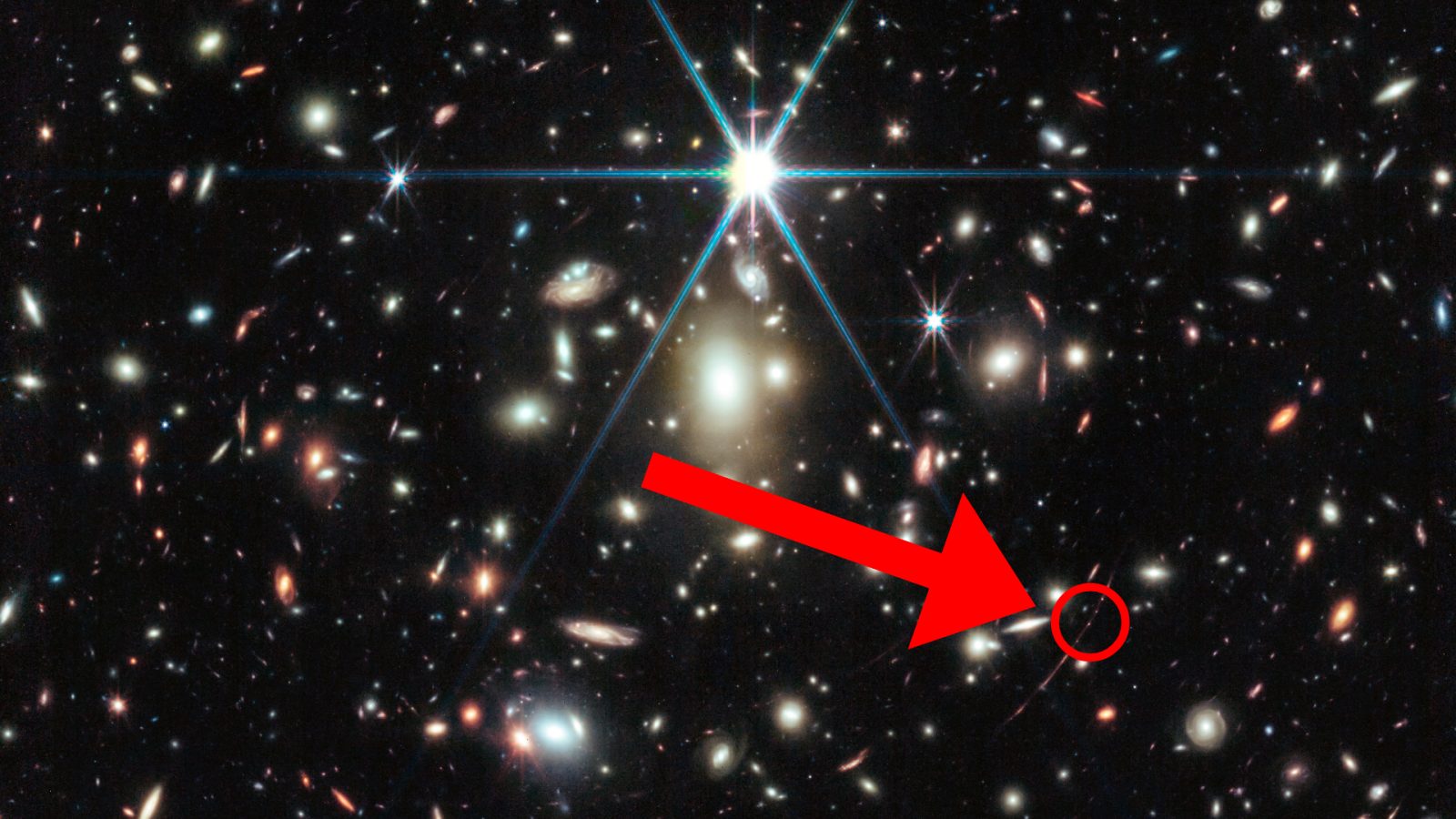
Thanks to NASA’s James Webb Space Telescope, astronomers have begun studying and measuring the most distant star ever detected, with the most powerful telescope ever built.
Earendel was first discovered last year by the Hubble Space Telescope. The star is located so far away that its light has taken 12.9 billion years to reach Earth, appearing to us as it did when the universe was just 7 percent of its current age. “The smallest objects previously seen at such a great distance are clusters of stars, embedded inside early galaxies,” says NASA.
Because the universe is expanding incredibly fast, the star’s distance is now believed to be over 28 billion light-years from Earth.

Credit: NASA/ESA/CSA/STScI/AURA for ESA/Johns Hopkins University
Hubble was able to find Earendel thanks to a phenomenon known as gravitational lensing.
This occurs when the gravitational field of a massive object, such as a galaxy or, in this case, a huge star, bends and distorts the path of light from a background object, such as a more distant galaxy or quasar. This bending of light creates a lens-like effect, magnifying and sometimes even distorting the appearance of the background object.
Researchers estimate that Earendel is at least 50 times the mass of the Sun and millions of times brighter.
“But even such a brilliant, very high-mass star would be impossible to see at such a great distance without the aid of natural magnification by a huge galaxy cluster, WHL0137-08, sitting between us and Earendel,” NASA explained in a statement.
Now that NASA’s James Webb Space Telescope has directly imaged the star, researchers can begin follow-up studies to measure its brightness and temperature and even determine its composition. Webb’s suite of new instruments and a mirror with high sensitivity to infrared light allows it to collect more information that the limited Hubble telescope cannot do.
We’ll know more about any discoveries or findings in the coming months.
Interested in doing your own star spotting? I’d recommend these Celestron telescope options to both beginners and experienced gazers.
Related stories:
- James Webb Space Telescope captures the Ring Nebula in never before seen details
- Mysterious ‘question mark’ object seen by NASA’s James Webb Space Telescope
- NASA detects signal from Voyager 2 after losing contact in deep space
FTC: We use income earning auto affiliate links. More.



Comments